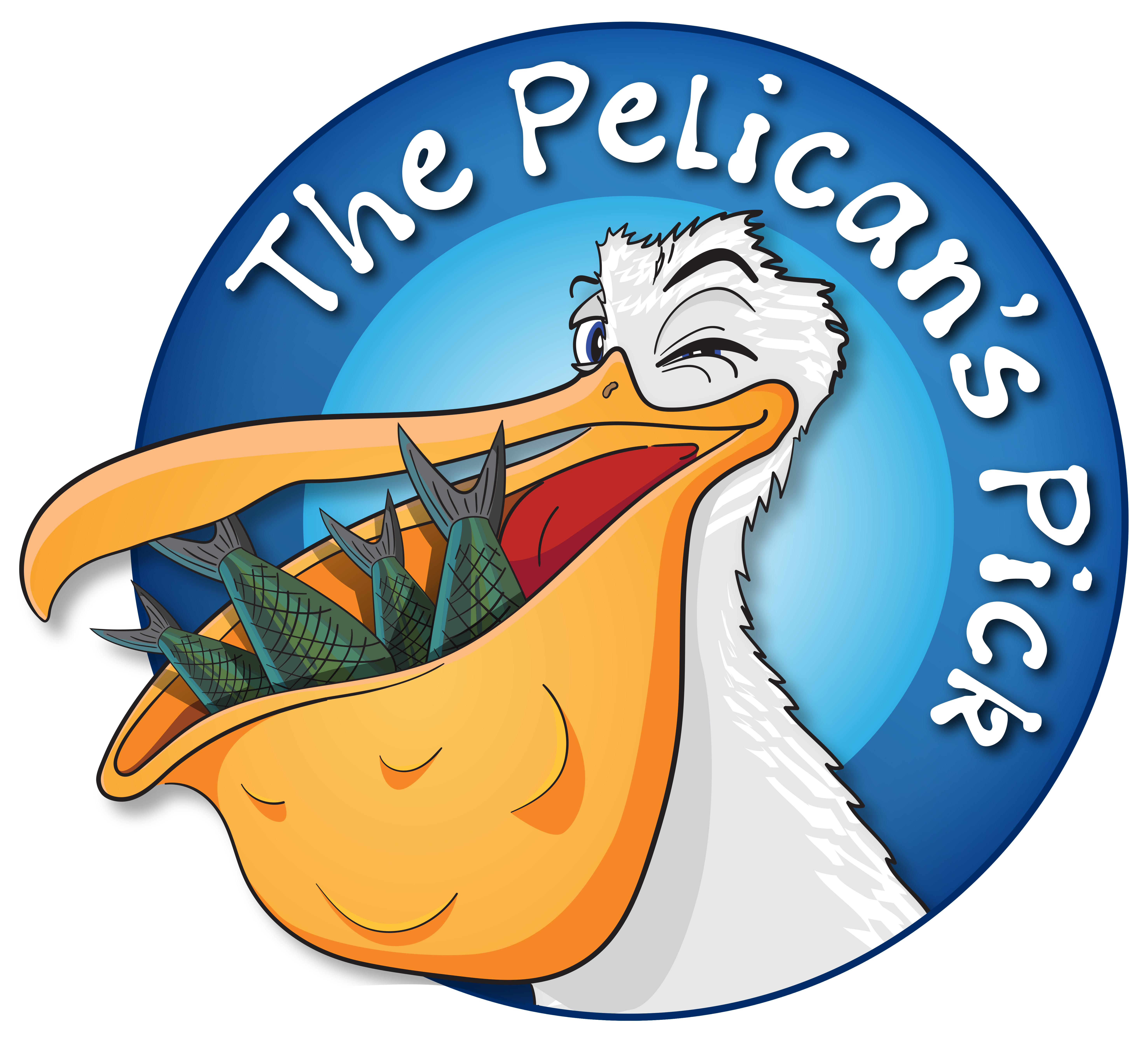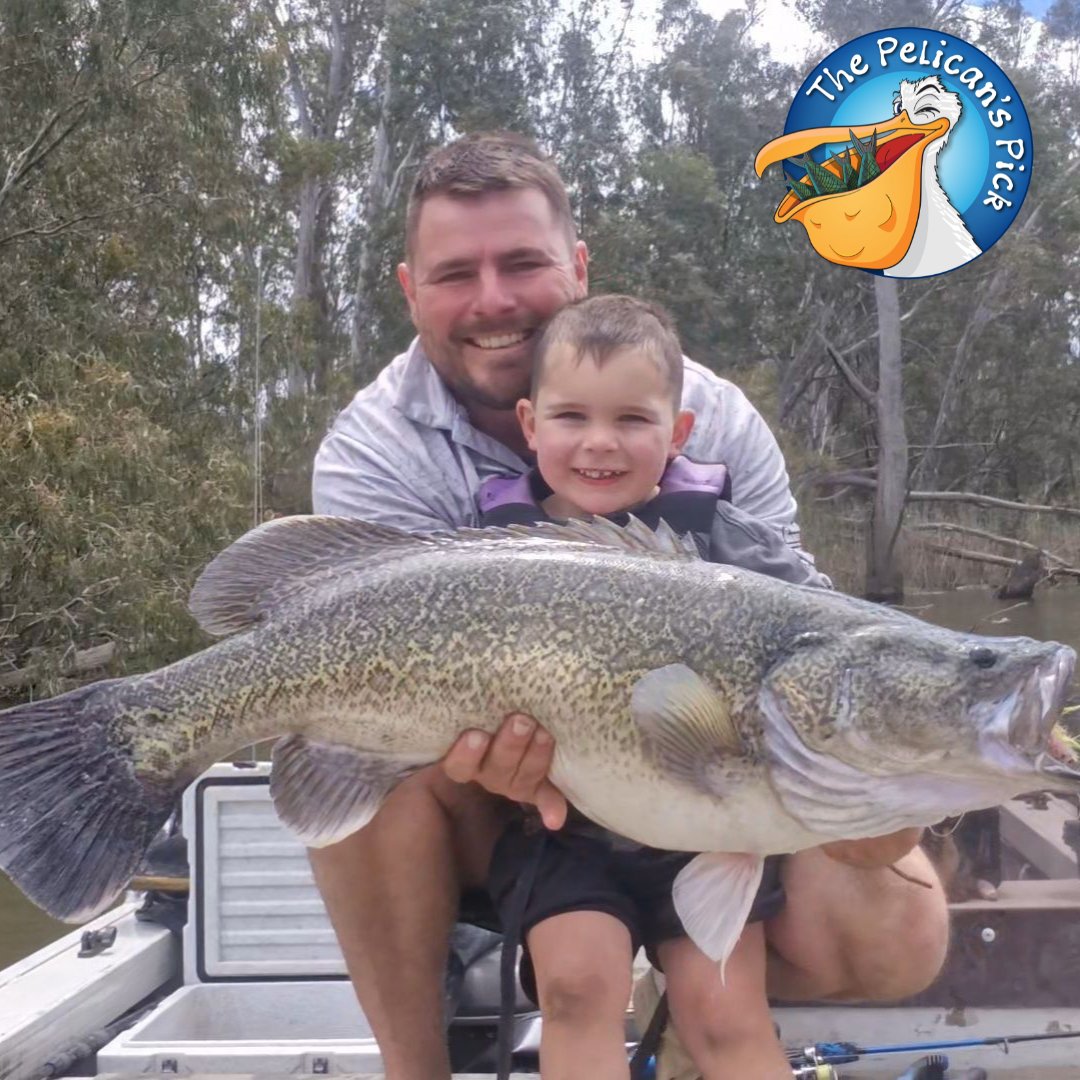The Pelican's Pick


Friday, 19 December
The cod action continues at the Goulburn River, with Ryan and his two-year-old son Tex creating a treasured lifelong memory!
Before hitting the water, they tied up a fly jig at home in the shed with the hopes of catching a monster fish, and that they did! Little Tex was in for a fight when this ripper 85cm cod absolutely hammered the fly jig! With a whole lot of grit, determination and a little help from dad, Tex reeled in his biggest catch ever!
Look at those smiles! It was a very proud dad moment for Ryan and an exciting catch for Tex. Well done, what a cracking way to spend the day on the water!
To be our next Pelican’s Pick star, submit your photos to pelicanspick@vfa.vic.gov.au, or share your fishing story here.
Along the Coast
Portland is the place to peel some line and have a great time! Snapper and gummies are in the area with some squid in the mix too, giving anglers some well deserved action! The snapper are loving yakkas, while the squid are hitting darker coloured jigs in low-light conditions. The Glenelg River is seeing mighty mulloway action and brilliant bream on the bite. Casting out soft plastics with slow retrieves is tempting these fish to hit the lure hard!
Apollo Bay is seeing huge schools of salmon cruising through. Keep an eye out for bust ups offshore. Land based anglers are having luck casting out pilchard baits and are reeling in meal sized flathead and silver trevally.
Dedicated anglers continue to fish 90 Mile Beach with good results. There is still a fair amount of weed on the tide changes but clear spots are appearing and providing fishers with a good session. Those who can crack through the weed patches are getting stunning salmon catches on spoons. There is a good amount of flatties and whiting about too!
The bream are firing around Marlo, with sandworms and bass yabbies being the most effective bait. Further offshore, anglers are getting stuck into some fin-tastic flathead fishing with the odd salmon and gummy ending up on their line.
Mallacoota is a prime flathead fishing destination. Mammoth duskies are getting caught using large plastics and sandworms. Look for areas where clean and dirty water mix. This is the perfect location for these tricky ambush predators to hide. Bream are also very active around the inlet, giving fishers plenty of variety.
Around the Bays
If you’re getting ready to cook up a holiday feast, head to Port Phillip and Western Port to catch some fresh quality seafood to feed the family and friends. There’s some huge squid coming out of the Queenscliff area! To make perfectly fried calamari, cut into strips or rings and marinate in some buttermilk from 30 minutes to 2 hours. Season with your chosen batter and fry for 3-5 minutes or until golden brown. A drizzle of lemon and some salt and pepper and you have a deliciously tasty entrée!
St Leonards to Portarlington have got the ultimate piers to set up for the day and wet a line. When fishing at a pier, you don’t have to cast out too far as the fish will school up around the pylons. Use some fresh bait and even chuck in some berley to attract the fish. You’ll be sure to hook onto flatties, garfish, salmon and squid in no time!
Anglers around Werribee are bagging out on mega King George whiting and are reeling in super reds! The best way to catch KGW’s is to use fresh pipis and squid. If you’re keen for an adventure, then head to the east side of the bay - the snapper are really on the chew now! Paternoster rigs with fresh squid strips are working like magic and making snapper appear out of thin air!
Western Port has an extensive and complex system of deep channels and sand bars which consistently produce stellar catches for kayakers and boaters alike! Each channel can offer a different variety of fish to catch. Corinella’s deep channel is the perfect hunting ground for gummies and snapper, whereas the main channel on the Hastings side has got enough gummies to bag out with excellent catches of Aussie salmon, snapper and whiting as well.
Inland
If you’re looking for somewhere to go fishing this holiday season, you’re in luck! All the rivers and lakes across the state are experiencing a freshwater fishing frenzy!
The Wimmera River is full of perch action, with quality goldens and silvers smacking small brightly coloured hardbody lures. Taylors Lake has been busy with success! The cod in there are big and their appetites are bigger! Large chunks of chicken or a bardi grub will have them snapping your line like piranhas! The yellas are just as hostile, feeding on spinners and small stumpy’s. If you’re chasing brown trout start running to Lake Fyans, they are on the chew and in large numbers. Use light tackle such as scrub worms or small soft plastics and target logs and weed beds.
The Goulburn River…. Need we say more?! It’s no secret that some of the best cod fishing is taking place along the riverbanks of the Goulburn. There’s some fantastic summer weather on the way, so why not load up the car with the swag and find a beautiful spot to set up camp for the weekend! Whether you like to walk the banks casting spinners and bibbed lures or sit back and relax while bait fishing with yabbies and cheese, there’s a fair chance your reel will start to squeal with a healthy cod on the end.
Lake Banimboola is a premier, year-round trout fishery. Its cool waters cater to all trout fishers using all types of fishing methods! Fly fishing, bait fishing and lure casting will all guarantee a quality brown or rainbow trout at the end of your line. And if you don’t get onto the trout, you’re sure to hook onto some delicious bycatch of redfin.
Have a happy holiday, stay safe by the water and enjoy the ripper fishing on offer across Victoria!
Mr. Percy will be taking a two week break to cast a line and scope out some hot fishing tips to share with you all in the new year!
Until next time, Happy holidays and New Year!
Tight lines - Mr Percy!
